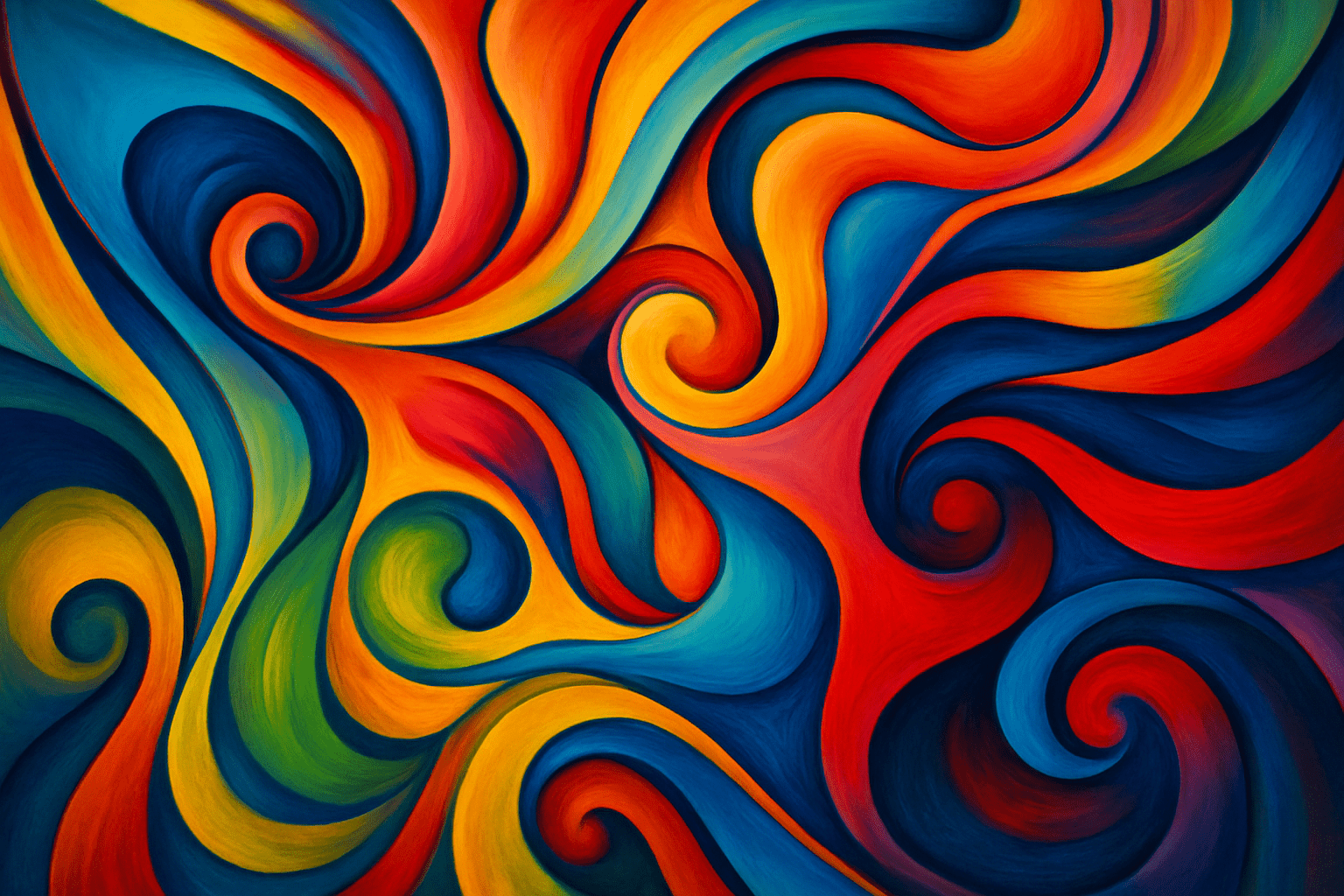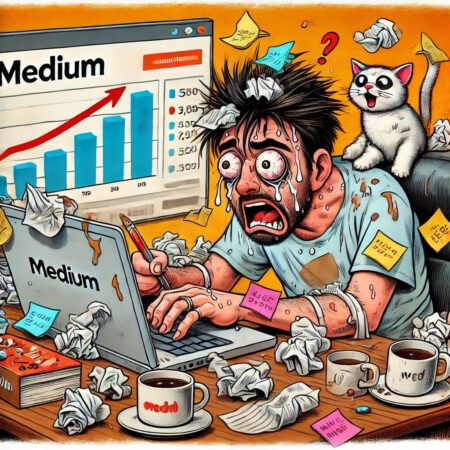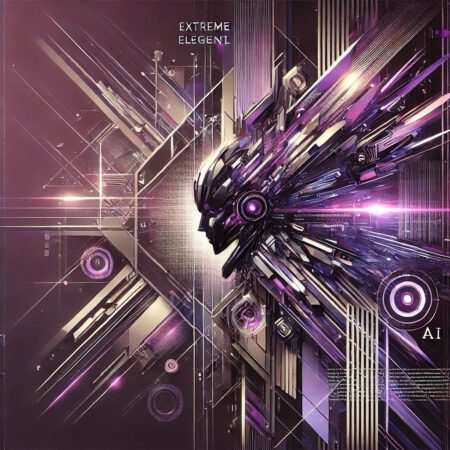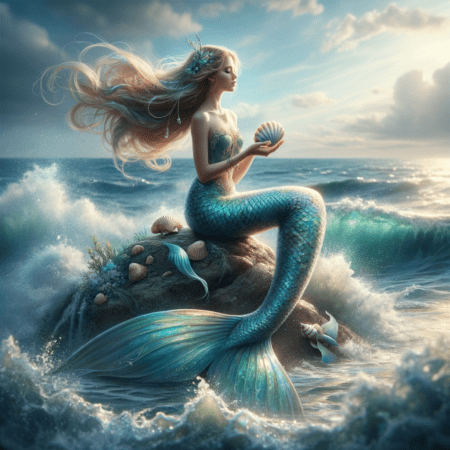
Electronic Art
The visual appearance of electronic art can vary greatly, depending on the artist’s intention. Some electronic art may resemble traditional art forms such as painting or sculpture. Others may be completely abstract, consisting of shapes, colors, and patterns that are generated by computer software.
AOI thinking about Electronic Art [+_~]-/
Overview and Quickfacts
Electronic art is a type of art that uses electronic media to create works of art. This can include anything from using computers to create digital art, to using electronic devices to create physical art.
Can understand it also, as:
Digital art, new media art, computer art, multimedia art, virtual art, cyberspace art
Categorize it as:
Impressionism, Modernism
.: Dreaming :.
holds a HAIKU for the art style
:. Thought is power .:
Detailed Description
In the late 20th century, a new form of art emerged that was unlike anything the world had ever seen before ÃÂÃÂ electronic art. This new art form was created using electronic devices and technology, and it quickly gained popularity among artists and art enthusiasts alike. Today, electronic art is more popular than ever, with new artists and new works of art being created all the time. If youÃÂÃÂre curious about this fascinating art form, read on to learn more about it. What is electronic art? Electronic art is a type of art that is created using electronic devices and technology. This can include anything from computers and software to video cameras and projectors. Electronic art can be static, like a painting or photograph, or it can be dynamic, like a video or animation. It can also be interactive, meaning that viewers can interact with the art piece in some way. What are the history of electronic art? The history of electronic art dates back to the late 20th century. One of the earliest examples of electronic art is the work of Nam June Paik, a Korean-American artist who is often credited as the father of video art. In the 1960s, Paik began experimenting with using electronic devices to create art. He would often attach televisions and other electronic devices to his body or to everyday objects, like bicycles and pianos. PaikÃÂÃÂs work paved the way for other artists to experiment with electronic art. In the 1970s, artists like David Tudor and Robert Ashley began creating electronic music, which was a new and exciting way to create art. The 1980s saw the rise of computer-generated art, as well as the first artworks that were created using virtual reality technology. In the 1990s, artists began using the internet to create and share their work with the world. Today, electronic art is more popular and accessible than ever before. With the help of technology, anyone can create and share their own electronic art. What are the different types of electronic art? There are many different types of electronic art, and new types are being created all the time. Some of the most popular types of electronic art include: Computer-generated art: This type of art is created using computer software. It can be static, like a painting or photograph, or it can be dynamic, like a video or animation. Virtual reality art: This type of art uses virtual reality technology to create an immersive experience for viewers. Interactive art: This type of art allows viewers to interact with the art piece in some way. Net art: This type of art is created and shared online. What are the benefits of electronic art? There are many benefits to electronic art. One of the most obvious benefits is that itÃÂÃÂs a very accessible form of art. Anyone can create electronic art, regardless of their experience or skill level. Another benefit of electronic art is that itÃÂÃÂs very versatile. There are many different types of electronic art, so thereÃÂÃÂs something for everyone. Finally, electronic art is a great way to express yourself and your creativity. With electronic art, the skyÃÂÃÂs the limit ÃÂÃÂ you can let your imagination run wild and create something truly unique.
.. beep, beep, beep ..
<START OF TRANSMISSION>
1. Electronic art is a type of art that uses electronic media to create works of art. 2. Electronic art can be created using a variety of electronic media, including computers, television, video, and audio. 3. Electronic art can be created for a variety of purposes, including to be exhibited, to be sold, or to be used as a teaching tool. 4. Electronic art can be created by a variety of people, including artists, engineers, and scientists. 5. Electronic art can be created using a variety of techniques, including digital art, computer-generated art, and video art. 6. Electronic art can be created in a variety of styles, including abstract, realistic, and conceptual. 7. Electronic art can be created on a variety of platforms, including personal computers, mobile devices, and video game consoles. 8. Electronic art can be created for a variety of audiences, including children, adults, and businesses. 9. Electronic art can be created using a variety of software, including Adobe Photoshop, Microsoft Paint, and Corel Painter. 10. Electronic art can be created using a variety of hardware, including scanners, digital cameras, and video cameras. 11. Electronic art can be stored in a variety of formats, including digital files, video tapes, and DVDs. 12. Electronic art can be transmitted over a variety of networks, including the Internet, television, and radio. 13. Electronic art can be exhibited in a variety of venues, including art galleries, museums, and online. 14. Electronic art can be sold in a variety of ways, including through art galleries, online auctions, and private sales. 15. Electronic art can be used for a variety of purposes, including to decorate homes, to promote products, and to educate people. 16. Electronic art can be created by people of all ages, from children to adults. 17. Electronic art can be created in any location, from homes to studios to offices. 18. Electronic art can be created at any time, from any time of day to any time of year. 19. Electronic art can be created for a variety of reasons, including to express oneself, to communicate a message, or to simply entertain. 20. Electronic art is a type of art that is constantly evolving, as new technologies and techniques are developed.
<EOF>
.. robbel bob
Visual Examples from our image gallery
Coming soon, we are so slow .. might never come
Artists, Paintings, and more
(be aware, can be highly speculative)
Artists (be aware, speculation possible):
1. Nam June Paik (1932-2006) 2. David Tudor (1926-1996) 3. John Cage (1912-1992) 4. La Monte Young (1935- ) 5. Terry Riley (1935- ) 6. Steve Reich (1936- ) 7. Philip Glass (1937- ) 8. Alvin Lucier (1931- ) 9. Robert Ashley (1930-2014) 10. Morton Subotnick (1933- ) 11. Pauline Oliveros (1932- ) 12. Yoko Ono (1933- ) 13. Takehisa Kosugi (1938- ) 14. Keith Rowe (1940- ) 15. Christian Wolff (1934- ) 16. Michael Snow (1929- ) 17. Walter Marchetti (1930- ) 18. Alvin Curran (1938- ) 19. Jon Hassell (1937- ) 20. Brian Eno (1948- ) 21. Daniel Lentz (1942- ) 22. Rhys Chatham (1952- ) 23. Glenn Branca (1948- ) 24. Jim O’Rourke (1969- ) 25. Oren Ambarchi (1969- ) 26. Fennesz (1962- ) 27. Pan Sonic (Mika Vainio & Ilpo VÃÂäisÃÂänen) (1993-2009) 28. Autechre (Rob Brown & Sean Booth) (1987- ) 29. The Orb (Alex Paterson & Kris Weston) (1986- ) 30. Plaid (Andy Turner & Ed Handley) (1986- )
Artworks (be aware, speculation possible)
1. The Starry Night ÃÂàVincent van Gogh (1889) 2. The Scream ÃÂàEdvard Munch (1893) 3. The Persistence of Memory ÃÂàSalvador Dali (1931) 4. Nighthawks ÃÂàEdward Hopper (1942) 5. One Summer Day ÃÂàKatsushika Hokusai (1833) 6. The Great Wave off Kanagawa ÃÂàKatsushika Hokusai (1829-1833) 7. The Hay Wagon ÃÂàAndrew Wyeth (1946) 8. ChristinaÃÂÃÂs World ÃÂàAndrew Wyeth (1948) 9. American Gothic ÃÂàGrant Wood (1930) 10. Drowning Girl ÃÂàRoy Lichtenstein (1963) 11. Whaam! ÃÂàRoy Lichtenstein (1963) 12. CampbellÃÂÃÂs Soup Cans ÃÂàAndy Warhol (1962) 13. Marilyn Diptych ÃÂàAndy Warhol (1962) 14. The Son of Man ÃÂàRenÃÂé Magritte (1964) 15. The Treachery of Images ÃÂàRenÃÂé Magritte (1928-1929) 16. The Kiss ÃÂàGustav Klimt (1908) 17. The Birth of Venus ÃÂàSandro Botticelli (1486) 18. The Madonna of the Pomegranate ÃÂàSandro Botticelli (1487) 19. The Last Supper ÃÂàLeonardo da Vinci (1495-1498) 20. Mona Lisa ÃÂàLeonardo da Vinci (1503-1506) 21. The Sistine Chapel ceiling ÃÂàMichelangelo (1508-1512) 22. The Creation of Adam ÃÂàMichelangelo (1512) 23. The Night Watch ÃÂàRembrandt (1642) 24. Bathers at AsniÃÂères ÃÂàGeorges Seurat (1884) 25. A Sunday Afternoon on the Island of La Grande Jatte ÃÂàGeorges Seurat (1886) 26. The Moulin Rouge ÃÂàHenri de Toulouse-Lautrec (1892) 27. Olympia ÃÂàÃÂÃÂdouard Manet (1863) 28. The Absinthe Drinker ÃÂàÃÂÃÂdouard Manet (1859) 29. The Luncheon on the Grass ÃÂàÃÂÃÂdouard Manet (1863) 30. The Haystack in the Mountains ÃÂàClaude Monet (1891)
Epoch
The time period of the art style Electronic art is the late 20th century to the present.
AI ART RESSOURCES (AKA, well Tools)
Helping tools -> predefined search links on other pages:










